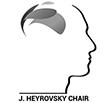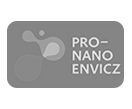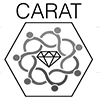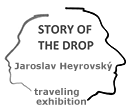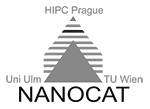Lukáš Petera: I am just a one piece out of the puzzle, without colleagues I would not be able to do anything
He wants to figure out the possible consequences of bombarding the early planets with asteroids and comets. What did the numerous impacts of bodies wandering in the young solar system means for the origin of life? He wrote a diploma thesis about it, which was so great that Lukáš Petera from the Faculty of Science, Charles University, won the prestigious Werner von Siemens Award for it in March this year.
At the beginning of our meeting at the J. Heyrovský Institute of Physical Chemistry, the recent winner of the Siemens Prize seems to almost apologize: “There is a lot of work that deserves the award. I never thought that mine could be of interest to anyone.” The pleasant, modest-looking young scientist then willingly followed the photographer´s instructions to answer Forum´s questions regarding scientific research with a good deal of patience.
If you were to bring your work entitled Consequences of heavy bombardment for chemical and prebiotic evolution on early Mars and Earth closer to people who only guess, or to a child who has no idea, would it be a fairy tale or more like horror?
It´s hard to say (he thinks about it). The origin of life on earth, or its possible origin on other cosmic bodies, is a very complex topic. In order to at least get closer to its possible solution, it is necessary to combine existing knowledge from different scientific disciplines. Astrobiology, which deals with the given issue from the highest perspective, is a relatively young scientific branch and includes several scientific disciplines. It´s mainly about astronomy, physics, geology, biology, or “my” chemistry.
Imagine the origin and evolution of life – as we know it from our planet – as an imaginary line. At the beginning of this line are simple chemical compounds, which are constantly transformed through processes of chemical evolution into increasingly complex (macro) molecular structures, such as proteins or nucleic acids, DNA and RNA. The mutual “cooperation” of these “building blocks” leads to the formation of primary cells. These cells, as most people already know, are then transformed through processes of biological evolution into increasingly complex systems, which ultimately lead to the formation of such a complex organism – us – which is able to question its own origin. It is therefore clear that it is not possible to describe this process in any way with the knowledge of one scientific field. As the complexity of the system grows, it is necessary to gradually move from a physicochemical point of view, through biochemistry and molecular biology to biological description…
So what is the task of you, the chemists?
In particular, the study of the first, the so-called prebiotic phase. In other words, the period between a purely “inanimate” environment and the first living chemical system. Prebiotic evolution is divided into a number of partial steps. Our scientific team is researching its very origins: How can simple molecules – such as ammonia, hydrogen cyanide, carbon dioxide, formamide – form the basic building blocks of life? These were probably nucleobases, nucleotides or their precursors, amino acids, sugars and lipids.
Scientists have been working on the synthesis of the basic building blocks of life under the conditions prevailing on early Earth for decades. The theory of chemical abiogenesis, describing the evolution of living systems from inorganic substances, was published in 1924 by the Russian chemist Alexandr Ivanovich Oparin. The first significant experiment to confirm this theory which showed the possible formation of compounds under conditions on early Earth, was the well-known Miller-Urey experiment (conducted in 1952 and published in 1953 by Stanley Miller and Harold Urey working at the University of Chicago; ed.). Miller then „mixed“ a model system containing a reducing atmosphere of methane, ammonia, hydrogen and steam. There was no lack of liquid water representing the ancient ocean, sea or lagoon. Two electrodes were built into the apparatus, with which Miller simulated lightning bolts in the mixture for several days. After a few days, he detected by paper chromatography that simple amino acids had formed in the apparatus. It was later found that under suitable conditions, all essential amino acids and sugars are formed. And we managed to prove that due to the impact of the asteroid also arises RNA base. In short, Miller‘s experiment leads to all the basic building blocks of life…
But that happened almost seventy years ago…
(with a smile) The original experiment did, but since then there have been a number of modifications and extensions to the experiment. There is rather a talk of Miller mixtures of prebiotic chemicals. Today we already know that these compounds can be formed in similar mixtures not only by lightning but also by UV radiation, solar wind, simple heat or plasma created by the impact of an asteroid. At the same time, we know that the formation of these compounds does not have to be associated only with planetary surfaces; they can also form on dust grains in interplanetary space and by impact to get on early planets. When we return to our imaginary line, we see that there are more possible „starts“. However, the question remains whether and which of them was the dominant one or whether their combination was important. And now, with the knowledge of such possibilities at the start, imagine what possibilities might have occurred in the subsequent development…
So you’re not interested in lightning but huge bodies falling on the surface?
Exactly. We set out on a journey of research into the origin of these basic building blocks of life from the point of view of high-energy chemistry which can be triggered by the impacts of huge bodies – asteroids or comets – on the surface of planets. We are also interested in whether these compounds can also be formed in the later stages of the development of impact craters, when the crater weathers and residual impact heat and various types of materials play a creative role here.
And also during the heavy bombardment…
We are talking about a period of 4 billion years ago. On the one hand, a large amount of the residual material was still wandering through the early solar system and it is also discussed that due to shifts in the orbits of the outer large planets, huge amounts of asteroids and comets penetrated into the inner solar system, literally bombarding the surface of the rocky planets Earth, Mars and Venus. However, my work was partly based on this assumption which is still the subject of discussions.
Why are you interested in Mars beside Earth?
Mars can be considered a geologically „dead“ planet. The atmosphere there is about 160 times thinner than on Earth and about 96 percent is made of carbon dioxide. The surface temperature is approximately between -80 Celsius and +20 Celsius. Mars lacks such an important magnetic field for terrestrial life that it acts as a protective shield against dangerous cosmic radiation on Earth. Of course, there is also a lack of the ozone layer which in turn acts as a shield against harder UV radiation. There are really many differences.
On the other hand, there are a number of scientific publications confirming that this has not always been the case. About 4 billion years ago, Mars could have been very similar to Earth: The atmosphere was denser with running water or even a global ocean on the surface. There are even indications that Mars may have had a magnetic field. And even though it lost all these qualities, it is important to us that it had them at all.
I see. So they are similar and yet different, right?
What is extremely important to us is plate tectonics. Earth is (so far) the only known planet that has this feature. There are only indications that it could occur on Jupiter‘s moon, Europe. The earth‘s surface is thus divided into several lithospheric plates in constant mutual movement. When the edges of two boards collide, various phenomena can occur, such as the formation of mountains or earthquakes. One of the phenomena is also subduction when one plate „slides“ under the other and the material from which it is formed is gradually remelted in the Earth‘s mantle. On the other hand, on the other side of the plates, where the plates move away from each other, a new Earth‘s crust is formed. The earth´s surface is thus constantly „recycled“. Although there are places on Earth that contain minerals that are more than 4 billion years old, they are very rare. Therefore, we are not able to observe traces of impact craters on Earth from the era of the heavy bombing and thus look for traces of ancient prebiotic chemistry. However, this cycle appears to be important for the chemical stability of the environment.
So Mars with Martian craters is better for observation?
Mars lacks plate tectonics. While the scientific community is still actively debating whether of not Mars had plate tectonics in the past, one thing is certain: the surface of Mars is at least two-thirds older than 3,5 billion years and impact craters from the early Mars period are clearly observable.
Impact craters may have played an important role in the origin and evolution of life on Earth. If we take into account that the same chemistry took place on early Mars as on early Earth, then the subsequent inhospitable conditions on Mars could both make life impossible and, on the contrary, „preserve“ traces of ancient prebiotic chemistry. Thanks to this, Martian craters can serve as a „museum“ of prebiotic chemistry and their current or future research can bring a lot of interesting information to understand the origin of life.
As far as we are concerned, we are simply the workers who, in laboratory conditions, produce another inanimate material from inanimate material but this time they are the building blocks of life. In short, we take a mixture of simple substances, add minerals, clays or meteorites and shoot it with a laser that simulates an impact plasma. Then all that remains is to wait to see if some of these products can be found on the surface of Mars.
The research is probably far from over. It is so?
Certainly! I would like to use the words of Associate Professor Lubomír Rulíšek (from the Department of Physical and Macromolecular Chemistry, Faculty of Science, Charles University) the more the ball inflates and the smaller the field of science we are able to cover. We are simply still finding new nooks and crannies and revealing the unknown. Sometimes it is necessary to look at things from a different angle and find connections between distant topics.
Personally, I would not be afraid to expand this comparison: On the way to scientific knowledge on the surface of this sphere, you put together puzzles – the pieces are of different sizes and shapes. Sometimes you manage to push them in by force so that in a few years you will find out that they don´t actually fit there. Unfortunately, sometimes many people perceive different pieces completely differently: for one they have a different color or shape than for the other. And so it is with this research. The availability of data from space research is limiting, while the results from them are the most important for us. We believe that our experiments are able to explain many of the results of these measurements. We come up with something, we research something but in a few years – who knows, everything can be completely different.
Don’t be angry Lukáš but when you talk, I get the impression that you’re playing in the lab.
I take it (he laughs). Science can‘t be done on attendance hours. I mean, like in a factory, where you leave after the shift and have a „clean“ head. You don‘t just leave the lab when needed. It is very easy to forget about the passing of time here over the experiment and go home, for example, at midnight. I checked the measured results a few times until the morning and then went home to sleep. It is necessary to constantly think about the issue. Of course, you have to be able to turn it off but often you can think of a possible solution to a problem anywhere other than at work.
From a certain point of view, however, science is not a game. I have achieved success but the research does not always succeed: you do not always receive a grant, you do not always publish in a prestigious magazine, your colleagues and the public do not always understand or appreciate your results. It is psychologically demanding and many people have therefore escaped from the scientific environment.
And as a boy, did you want to be an astronaut?
Of course, when I was about four or five.
I suspect that it was in the second semester of the freshman year that I enrolled in the subject of lasers in chemistry, I was extremely interested in the name. The teacher was Professor Svatopluk Civiš, the founder of our laboratory at the J. Heyrovský Institute of Physical Chemistry and one of the founding fathers of the Czech Origin of Life research.
Was that the beginning of your journey to „chemical astronomy“?
When I found myself in Professor Civiš‘s laboratory, it was a magical deja vu: I realized that I had been here on an excursion during my studies at the chemical industrial school. I asked him if they would have a job for me. And so I got to my tutor, Dr. Martin Ferus, his former student and also a colleague at the time. It‘s been about five years since I firmly anchored myself at the J. Heyrovský Institute. I would like to point out that, in addition to my colleagues from the Institute, Associate Professor Zuzana Bosáková, the guarantor of my bachelor‘s and master‘s studies, also has a large share in my success. It was she who allowed me to deal with a somewhat „exotic“ topic in my field (with a smile).
And aren’t you attracted to research at NASA?
Of course, I would like to see a piece of the world but I am not thinking about any change at the moment. People often „visualize“ their dream too much. And then, when they pursue something and achieve it, they find that the dream goal does not bring them the expected enjoyment. Your dream goal can be so difficult to achieve that even your whole life is not enough to achieve it. In these often blinded hunts, people escape the most fundamental essence of human action: the goal is the journey itself, not its end. I admit, it may sound like a cliché but let‘s think about whether we are really just slaves to our dream. I try to be happy where I am and be grateful for what I have accomplished; even for the successful completion of school. Whether I will deal with the topic of the origin of life in ten year‘s time or work in another laboratory on another research or whether I will shear sheep in New Zealand is a question of the future. I‘ll wait for everything to come.
Why do you think your diploma thesis was successful?
It was definitely an attractive topic. We must realize that if a human scientist devotes himself to an area that is not very attractive to laypeople, he will not receive much recognition from the public. On the other hand, less interesting, fundamental to the lay public, scientific branches that are very important for other scientists. They bring us basic data and „serve“ the basics for further research. In short, the scientific community can appreciate it.
In our multidisciplinary field, it is wonderful how everything is intertwined and one finds that one does not work without the other. Even when I joined the faculty, my classmates and I argued: is it more cool to study physics or chemistry, or is chemistry better than biology? When you‘re in chemistry, you wonder if the chemistry is better inorganic, organic or physical. From my current perspective at the Institute, I come to the only possible thing: everything is related to everything.
I wanted to say that although I wrote my diploma thesis, I carried out experiments but I would hardly be able to achieve anything in life without my colleagues and cooperation with people „outside“, outside our laboratory. For example, colleagues from Mendel University in Brno provide us with analyzes, we also cooperate with the Observatory in Valašské Meziříčí, thanks to which we can observe the emission spectra of meteors or with theoretical scientists from the University of Cambridge who model planetary atmospheres. I‘m really just one of the pieces.
https://www.youtube.com/watch?v=Bp45SXJuLko&ab_channel=Siemens
Author: Marcela Uhlíková
Photo: Hynek Glos
The article was published in the online magazine of Charles University Forum.






